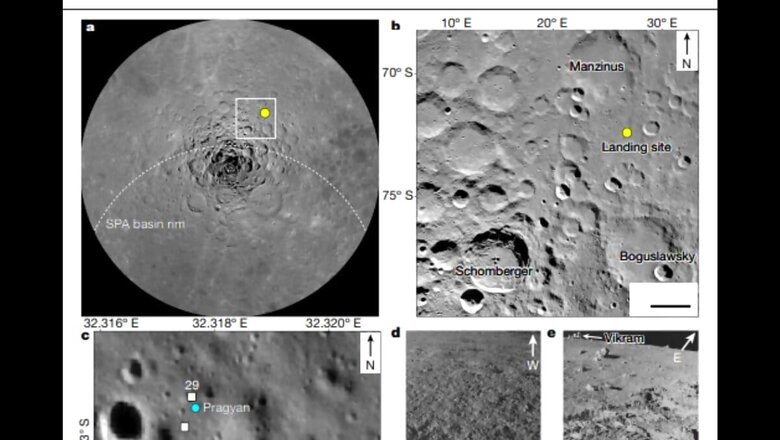
views
India’s third mission to the moon has provided evidence of an ocean of magma which once existed on the Moon’s southern highlands — confirming scientists’ long-standing hypothesis of Moon’s origin and evolution from a giant ocean of magma which later cooled down.
Chandrayaan-3 launched by the Indian Space Research Organization (ISRO) on July 14 was the first-ever spacecraft to land near the lunar South Pole on August 23. The latest findings were made by scientists from Ahmedabad’s Physical Research Laboratory (PRL) who analysed this crucial data from the landmark mission and published in the peer-reviewed scientific journal Nature on the mission’s first anniversary.
“For long, it was believed that the Moon was a molten rock, covered by a huge ocean of magma. But we do not know how big or widespread it was, or whether this ocean actually existed or not. But the remote-sensing data from previous lunar missions, and investigation of the rock sample collected, indicated that it must have been the case. Still there was a lot of uncertainty,” lead author and astrophysicist Professor Santosh Vadawale from PRL, Ahmedabad, told News18.
In order to establish this Lunar Magma Ocean (LMO) hypothesis, scientists have been trying to collect and analyse the lunar soil using remote-sensing data from different locations on the moon. So far, all the research into the Moon’s geology has relied on the observations/samples taken by previous missions like the Apollo (US), Luna (Soviet Union) and Chang’e 5 missions (China) which explored the equator to mid-latitude regions. But none of them touched the relatively pristine, unexplored South Pole.
“This was the first time that we have reported in-situ measurements of the lunar soil (regolith) from the highlands near the South Pole of the Moon. We provide concrete evidence of a uniform elemental composition of the lunar soil on the South Pole, as was observed with the samples collected from Moon’s equatorial to mid-latitude region taken by the Apollo 16 (USA) and Luna-20 (Soviet Union) missions,” he added.
The landing site was primarily composed of the rock type ferroan anorthosite. The similarity in the chemical composition of the lunar soil thousands of kilometers apart on the Moon, confirms the Lunar Magma Hypothesis (LMO) for formation and evolution of the Earth’s nearest celestial neighbour. The hypothesis suggests that the Moon cooled during its formation — while the less dense ferroan anorthosite rocks floated to the lunar surface to form the highlands, the heavier minerals sank to form the mantle (middle layer of soil).
The present evidence will help scientists to uncover how the Moon was actually formed and evolved. The scientific findings also have implications on future moon exploration missions with countries racing to set up a lunar base for astronauts. While NASA has planned its Artemis programme, ISRO has also announced its next moon mission by 2027 to collect and return to Earth with samples of lunar rocks.
The data was collected using one of the payloads — Alpha Particle X-ray Spectrometer (APXS) experiment — aboard the Pragyan rover. Just as the Lander Vikram touched down on the moon on August 23, the rover Pragyan rolled down and travelled a distance of 103 metres. The APXS instrument designed by PRL Ahmedabad was powered on during 30 rover stops of which 23 were used for scientific observations, with the lunar exposures ranging from 20 to 175 min.
It took as many as 23 measurements at various spots along its 103-metre tract of the lunar surface using its on-board alpha particle X-ray spectrometer, and measured the elemental composition of the Moon’s regolith (lunar soil) providing clues to the overall understanding of the origin and evolution of the Moon.

















Comments
0 comment